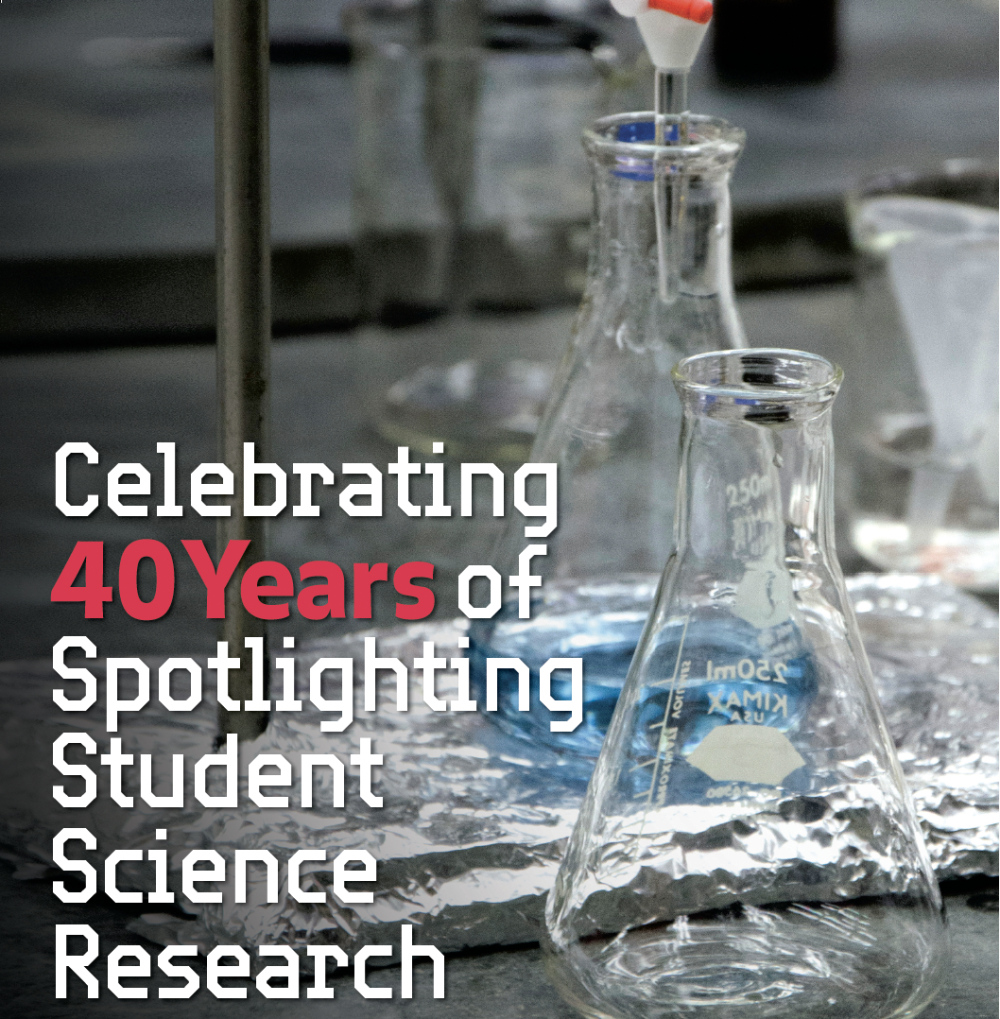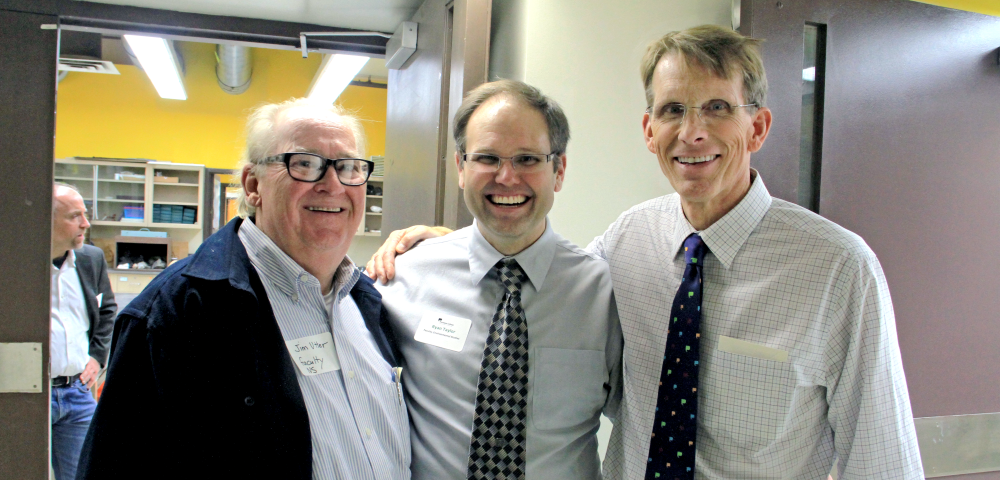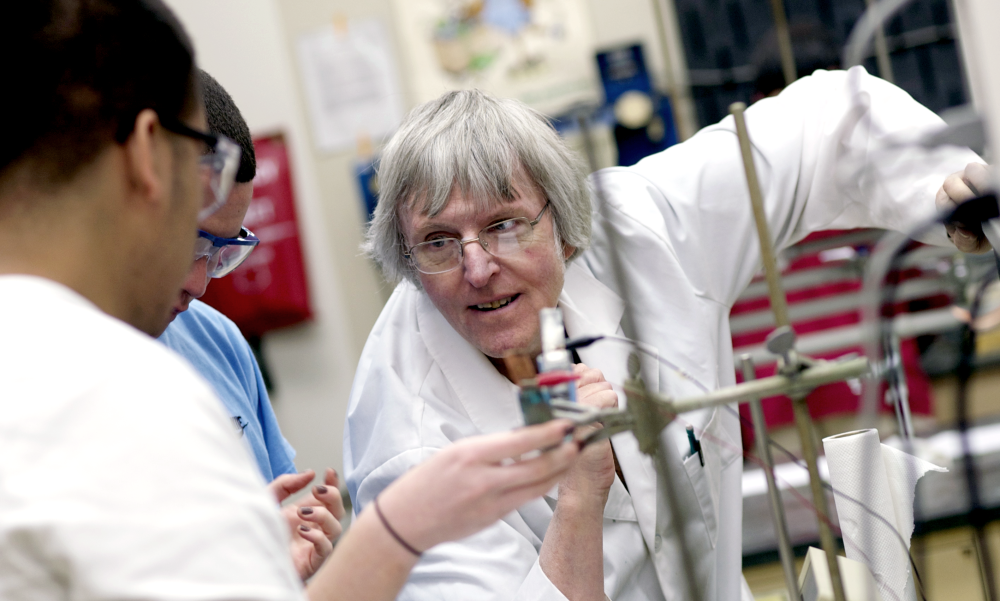A Legacy of Experiential Learning

The sunshine beaming outside was no match for the energy inside, a result of the nearly 200 students, faculty, alumni, and visitors thrilled to be in person once again for the annual Natural and Social Sciences Student Research Symposium.*
Even more gratifying, the event, held on Saturday, April 30, marked the 40th iteration of this acclaimed Purchase tradition.
A Lasting Tradition
For 40 years, the symposium has remained a highlight of the Purchase science experience. Students share the results of the research they’ve spent their senior year (or more) exploring in the lab or field. Modeled after professional science conferences routinely held worldwide, the symposium provides a taste of what it’s like to present scientific findings in a real-world setting. And, more broadly, it’s excellent training in public speaking.
The Students, the Arts, and the Sciences
The very first symposium had dual objectives—it provided a hands-on educational experience while it showcased the incredible work being done in the sciences. In 1982, just 10 years after the first students were admitted, the college’s reputation in the arts flourished. But lacking the arts’ inherent opportunities for display through exhibitions and performances, the sciences were being overshadowed.
A Bold Move
But Jim Utter had an idea. One of six founding professors in the natural sciences, Utter had just been elected dean of natural sciences by the faculty (to replace founding dean Curtis Williams, who was stepping down). Holding an administrative position provided the perspective and initiative behind his bold proposal—a symposium-style event for science students to share their research and celebrate their achievements.
Distinguished Service Professor of Chemistry Joe Skrivanek recalls his initial hesitation. “We were all on board but a bit skeptical the first time around.”
On April 28, 1982, the first symposium featured a keynote address by Dr. David Groopman, MD, BA ’73 (Environmental Science), and 24 presentations, four each in six categories: mathematics, animal behavior, biochemistry, literature reviews, environmental science, and psychology.
In a 1984 New York Times piece covering the third symposium, “Science Takes the Spotlight At Purchase,”the late Paul L. Steineck, professor emeritus of environmental studies and chair of natural sciences at the time, credits Utter entirely, conceding, “I told Jim it would never work and the first one was an absolute success. I was totally wrong. Jim has remarkable enthusiasm and energy, and he carried people with him. I ate crow and now I’m the symposium’s biggest supporter.” Utter retired as associate professor emeritus of environmental studies and biology in 2011. 
Shifting Models
In the early years, a keynote speaker opened the event, and students made oral presentations only, a reflection of the professional field at the time. Somewhere in the late 80s, a shift occurred, and the Purchase symposium followed suit—the poster presentation became the norm. The keynote address was phased out to allow more time for student presentations. Now, students prepare PowerPoint visuals to accompany the oral presentations, and the posters are polished.
Real Benefits
Skrivanek, who was dean from 1992 through 2004, remains a true believer in both the senior project requirement and the symposium. “It helps the students to thrive,” he says. “They get to make the connection between what they’re learning in the classroom and what they’re doing in the lab.” 
While the chance to present the results they’ve been working on for a year is key, the experience provides much more. “It gives the students a lot of confidence,” says Skrivanek. “And it sets them apart from others who are applying to graduate school, applying for a job, applying to medical school, because they have something they can talk about.”
Professor of Anthropology Rudolf Gaudio, current director of the School of Natural and Social Sciences, agrees. “The senior project enhances the Purchase College graduates’ competitive standing in graduate and professional school admissions as well as in obtaining employment.”
Jaya Laskhmi ’99 (Chemistry) recently described her symposium experience. “It was a nerve-wracking experience at the time, but it helped me move to graduate school, where you present on a regular basis,” she says. She’s now an expert in innovation management at BASF and holds 14 patents for her research with catalysts.
Back to Business
The 40th symposium featured 22 students presenting oral presentations and even more posters. The topics ran the gamut from lobster feeding (Gresi Kalamishi, Biology) to microplastics (Paola Cruz- Martinez, Environmental Studies), from mathematics in art (Mélissandre Jones, Math/Computer Science) to determining the value of an NFL quarterback (Joseph Higgins, Economics), to how owning a dog affects the gut microbiota (Alexandria Clarke, Biochemistry).
Gaudio believes that with each symposium, we honor the legacy and ongoing excellence of the sciences at Purchase. “We celebrate the progress our seniors have made as engaged citizens and budding professionals,” he says. “We are extremely proud of the important contributions our alumni are making in a range of fields including law, business, government, social work, media, education, technology, and health care.”
(*The symposium scheduled for 2020 was canceled, and the 2021 event was held virtually.)
